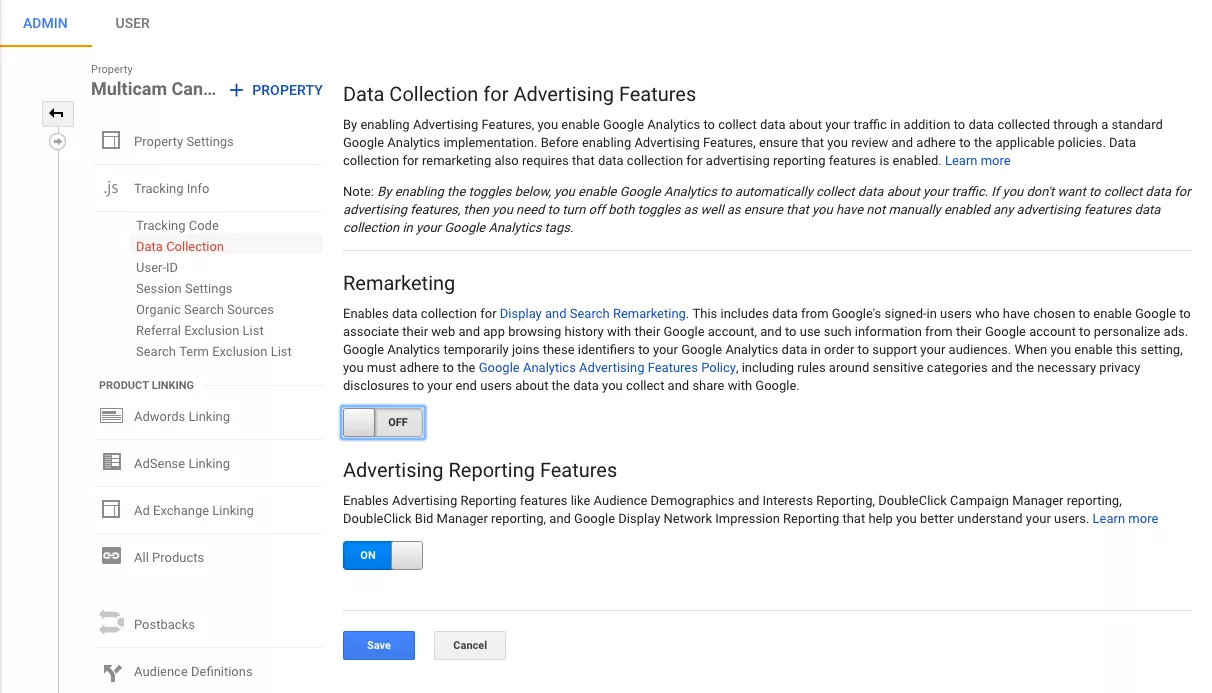Maximizing Your Projects with Remarketing In Google Analytics
Maximizing Your Projects with Remarketing In Google Analytics
Blog Article
Optimize Your ROI With Remarketing in Google Analytics
In the world of digital marketing, the utilization of remarketing strategies within Google Analytics has proven to be a powerful device for improving return on investment. By harnessing the power of individual data and customizing ads to details target market sectors, businesses can substantially magnify their conversion rates. The real essential lies in the art of precision - understanding customer habits, crafting compelling advertisements, and continually refining methods to drive optimal outcomes. The journey to maximizing ROI with remarketing is a nuanced course paved with insights and chances that can reshape the trajectory of your advertising and marketing ventures.
Comprehending Remarketing in Google Analytics
Recognizing remarketing in Google Analytics is vital for optimizing your electronic advertising and marketing technique. Remarketing permits you to target individuals that have actually formerly visited your internet site or communicated with your application, presenting them with tailored advertisements as they browse various other websites or utilize various other apps within the Google Show Network. This approach assists maintain your brand name top of mind and encourages individuals to go back to your site, eventually raising the likelihood of conversion.
By making use of Google Analytics, you can track the efficiency of your remarketing campaigns, acquiring beneficial insights into individual actions, engagement, and conversions. This information enables you to fine-tune your messaging, targeting, and bidding process methods to improve the overall efficiency of your campaigns.
Furthermore, comprehending the different types of remarketing lists available in Google Analytics, such as common, vibrant, and similar audiences, allows you to create personalized and highly fractional projects tailored to particular individual sectors. This degree of granularity can dramatically boost the importance and influence of your remarketing initiatives, eventually maximizing your return on investment.
Establishing Remarketing Listings
To efficiently execute remarketing projects in Google Analytics, the first action includes producing and setting up remarketing lists targeting details individual segments based upon their interactions with your website or application. By establishing remarketing lists, you can customize your advertising efforts to reach users that have currently shown passion in your solutions or products.
To start, navigate to the Admin area of your Google Analytics account and choose the Home where you intend to produce the remarketing list. Then, under the Property column, click 'Target market Definitions' and select 'Target markets.' Next, click the red 'New Audience' button and select 'Develop New' to specify the parameters for your remarketing checklist.

Crafting Effective Remarketing Ads

When crafting your ads, focus on creating eye-catching headlines and compelling visuals that attract attention to potential clients. Integrate solid calls-to-action that motivate individuals to review your website and finish a wanted activity. Use dynamic remarketing to show tailored advertisements including services or products that individuals have actually previously watched on your website.
Furthermore, make sure that your ads are mobile-friendly considering that a substantial part of web web traffic comes from smart phones. Examination various advertisement variations to identify which messages and designs drive the finest outcomes. By constantly refining and enhancing your remarketing ads based on performance information, you can optimize their efficiency and improve your return on investment.
Studying Remarketing Performance

Via Google Analytics, marketing professionals can track the performance of their remarketing projects in real-time, allowing them to determine fads, patterns, and locations for improvement promptly. By evaluating the information, marketing professionals can determine which ads are executing well, which audience sectors are responding favorably, and which networks are driving the most conversions. This degree of granularity enables online marketers to make data-driven choices to optimize their remarketing projects for far better results.
Enhancing ROI With Remarketing
Analyzing remarketing data in Google Analytics allows marketers to identify opportunities for enhancing return on financial investment (ROI) through calculated changes - What Is “Remarketing” In Google Analytics?. To maximize ROI with remarketing, it is important to recognize the behavior of your target market. By evaluating individual communications, such as the web pages they visited, the products they saw, or the activities they took on your site, you can customize your remarketing campaigns a lot more properly
Segmenting your target market based on their behavior enables you to develop customized and targeted advertisements that are most likely to resonate with them. By revealing pertinent ads to certain sectors of your target home market, you can raise the opportunities of conversion and ultimately improve your ROI.
Additionally, testing different ad creatives, messaging, and offers can help determine what resonates finest with your audience. A/B testing allows you to experiment with various elements of your advertisements to establish what drives the highest possible interaction and conversion prices.
Final Thought
Finally, taking full advantage of ROI with remarketing in Google Analytics calls for a critical strategy to evaluating individual behavior, segmenting target markets, developing customized ads, and maximizing project performance. By leveraging data-driven insights and testing various methods, companies can boost their remarketing initiatives to drive higher engagement and conversion prices. This methodical strategy ensures that sources are effectively allocated in the direction of making best use of rois in remarketing campaigns.
Next off, click on the red 'New Target market' switch and choose 'Create New' to specify the parameters for your Get the facts remarketing checklist.
By constantly refining and enhancing your remarketing ads based on efficiency data, you can optimize their efficiency and boost your return on investment.
By delving right into these insights, marketers can get an extensive understanding of just how their remarketing efforts are reverberating with their target audience and driving conversions. To maximize ROI with remarketing, it is critical to comprehend the actions of your audience.In verdict, taking full advantage of ROI with remarketing in Google Analytics calls for a tactical strategy to analyzing user habits, segmenting discover this audiences, creating tailored advertisements, and optimizing campaign efficiency.
Report this page